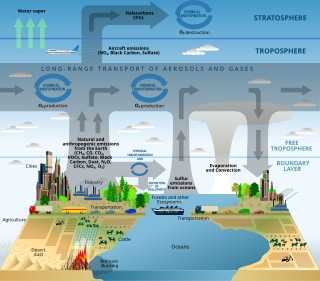科学建模
外观
此条目可参照英语维基百科相应条目来扩充。 (2019年10月2日) |

科学建模是一种借由已被广泛接受的科学以帮助我们了解、定义、量化、视觉化与仿真的科学活动。依据不同需求,在真实世界中萃取相关要素以建立适合的科学模型,像是借由概念模型以帮助我们了解现象,操作模型以给出操作型定义,数学模型以帮助量化,并且用图象模型去视觉化抽象概念。
建模是许多科学领域中的非常重要且不可分割的一部份,并且每种科学领域都有其特定的科学模型[1][2]。以约翰·冯·诺伊曼所说过的一段话为例[3]:
... 科学本身从来都不曾试图去解释自然现象,甚至是连诠释自然现象的企图都不曾有过,反而仅仅是建立模型。所谓的模型,就是——在数学意义上——去建构观察到的自然现象之间的数学关系。而此模型令人信服的唯一理由,就仅仅是因为它确实有用——能够描述足够广泛的自然现象。
科学建模已逐渐在受重视[4],例如在科学教育[5]、科学哲学、系统理论与视觉化 (电脑图学)。科学建模也有其相关的科学方法、技术与形上学等议题。
参考文献
[编辑]- ^ Cartwright, Nancy. 1983. How the Laws of Physics Lie (页面存档备份,存于互联网档案馆). Oxford University Press
- ^ Hacking, Ian. 1983. Representing and Intervening. Introductory Topics in the Philosophy of Natural Science. Cambridge University Press
- ^ von Neumann, J. (1995), "Method in the physical sciences", in Bródy F., Vámos, T. (editors), The Neumann Compendium, World Scientific, p. 628; previously published in The Unity of Knowledge, edited by L. Leary (1955), pp. 157-164, and also in John von Neumann Collected Works, edited by A. Taub, Volume VI, pp. 491-498.
- ^ Frigg and Hartmann (2009) state: "Philosophers are acknowledging the importance of models with increasing attention and are probing the assorted roles that models play in scientific practice". Source: Frigg, Roman and Hartmann, Stephan, "Models in Science", The Stanford Encyclopedia of Philosophy (Summer 2009 Edition), Edward N. Zalta (ed.), (source (页面存档备份,存于互联网档案馆))
- ^ Namdar, Bahadir; Shen, Ji. Modeling-Oriented Assessment in K-12 Science Education: A synthesis of research from 1980 to 2013 and new directions. International Journal of Science Education. 2015-02-18, 37 (7): 993–1023. ISSN 0950-0693. doi:10.1080/09500693.2015.1012185.
